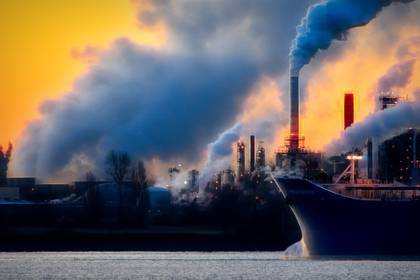

 Dr Deepak Kumar Pandey
Dr Deepak Kumar Pandey

Climate change is not a distant, hypothetical scenario anymore. It's happening right before our eyes, and its impact on the world's natural disasters is becoming increasingly apparent. From more powerful hurricanes to devastating wildfires, rising sea levels, and unpredictable weather patterns, the changing climate landscape is reshaping the frequency and intensity of natural disasters. In this article, we will delve into the profound influence of climate change on these events, explore emerging trends, and discuss crucial mitigation strategies and the importance of preparedness.
The Unfolding Crisis
In recent years, we've witnessed a stark increase in the occurrence and severity of natural disasters, many of which can be directly attributed to a changing climate. Let's take a closer look at some of these trends:
1. Hurricanes and Cyclones: Warmer ocean waters provide the fuel that intensifies hurricanes and cyclones. Consequently, we've seen a rise in Category 4 and 5 storms, which are known for their destructive potential. The Atlantic hurricane season, in particular, has been breaking records with more frequent and powerful storms.
2. Wildfires: Extended periods of drought and hotter temperatures have created the ideal conditions for wildfires to flourish. Regions that were previously not prone to wildfires are now facing annual threats. The Australian bushfires and California wildfires serve as painful reminders of this trend.
3. Floods: Changes in precipitation patterns have led to more frequent and intense rainfall events, causing flash floods and river flooding in unexpected places. Coastal cities are increasingly vulnerable to storm surges due to rising sea levels.
4. Earthquakes: While climate change doesn't directly cause earthquakes, it can influence their frequency. Melting glaciers and ice sheets can relieve pressure on the Earth's crust, potentially triggering more earthquakes in certain regions.
Mitigation Strategies in a Changing Climate
As the world grapples with these evolving disaster trends, mitigation strategies become paramount. Here are some key approaches:
1. Climate Resilience: Building climate resilience into infrastructure and communities is essential. This includes constructing buildings that can withstand stronger storms, improving flood defenses, and implementing better urban planning to mitigate flood risks.
2. Reforestation: Combating wildfires requires proactive measures like reforestation and controlled burns to reduce fuel loads. Restoring ecosystems can also help in mitigating the severity of floods.
3. Early Warning Systems: Advanced early warning systems are crucial for hurricanes, floods, and wildfires. Timely alerts can save lives and reduce property damage.
4. Sustainable Practices: Encouraging sustainable land use practices, reducing greenhouse gas emissions, and transitioning to renewable energy sources are long-term strategies to combat climate change and its associated disasters.
Preparedness and Community Engagement
Preparedness plays a pivotal role in minimizing the impact of natural disasters. It involves not only government agencies but also individual and community efforts. Here's why it matters:
1. Evacuation Plans: Having well-defined evacuation plans and routes can be lifesaving during hurricanes, floods, and wildfires. Communities should regularly practice these plans to ensure smooth execution during emergencies.
2. Disaster Kits: Every household should have a disaster kit with essential supplies like food, water, medications, and important documents. These kits sustain families until help arrives.
3. Education and Awareness: Public awareness campaigns are vital for educating communities about the risks they face and the steps they can take to stay safe. Education empowers individuals to make informed decisions during disasters.
4. Community Resilience: Strong, connected communities are more resilient. Encouraging neighbors to look out for each other and establishing community networks can improve disaster response.
In conclusion, the future trends in natural disasters are intrinsically linked to climate change. The urgency to address climate change cannot be overstated, as it directly impacts the frequency and intensity of hurricanes, wildfires, floods, and earthquakes. Mitigation strategies and preparedness efforts are our best defenses against this evolving threat. As we adapt to the changing climate landscape, it's crucial that governments, communities, and individuals work together to build resilience and reduce the devastating impact of natural disasters in the years to come. Our future safety and the well-being of the planet depend on it.
*******
Dr Deepak Kumar Pandey is pioneer and expert of disaster management and crisis communication in India. He also regularly writes and delivers lectures on future trends of disasters. He has extensive experience in the field as he has participated in many big search and rescue operations and rehabilitation efforts.
..... .... Login with Google and support us